Search Result
Results for "
homoserine
" in MedChemExpress (MCE) Product Catalog:
8
Biochemical Assay Reagents
1
Isotope-Labeled Compounds
| Cat. No. |
Product Name |
Target |
Research Areas |
Chemical Structure |
-
- HY-119543
-
|
|
Amino Acid Derivatives
|
Others
|
|
O-Succinyl-L-homoserine is a homoserine derivative. O-Succinyl-L-homoserine is an intermediate in the biosynthesis of methionine in Escherichia coli and Salmonella typhimurium .
|
-
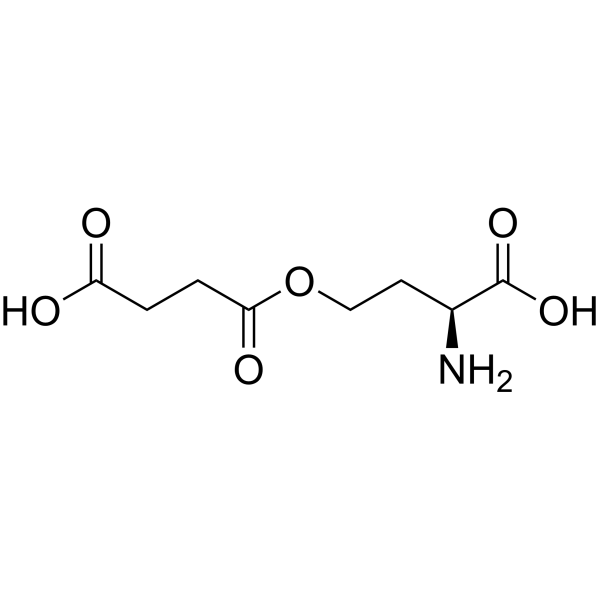
-
- HY-113801
-
|
(Rac)-3-oxo-C8-HSL
|
Others
|
Metabolic Disease
|
|
N-(3-Oxooctanoyl)-DL-homoserine lacton is a member of N-Acyl homoserine lactone (AHL) from gram-negative bacteria, with stereochemistry-dependent growth regulatory activity for roots .
|
-

-
- HY-133683
-
|
3-Oxo-C14-AHL
|
Others
|
Metabolic Disease
|
|
N-(3-Oxotetradecanoyl)-DL-homoserine lactone, a member of N-Acyl homoserine lactone (AHL) from gram-negative bacteria, is a quorum sensing (QS) signaling molecule .
|
-
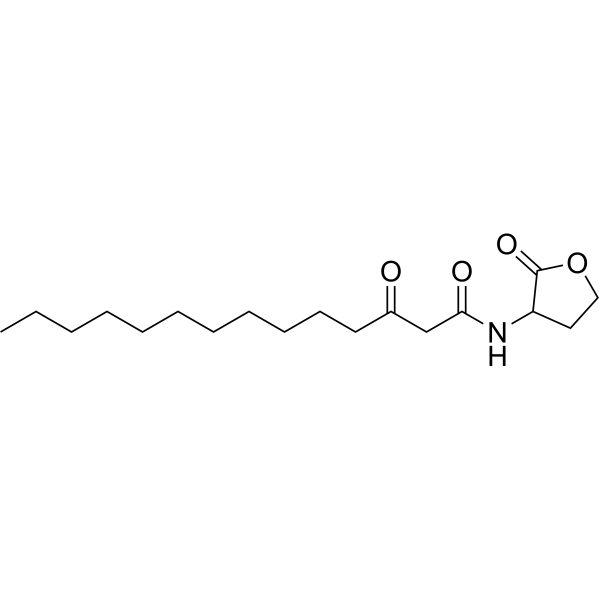
-
- HY-123087
-
|
N-(3-oxodecanoyl)-homoserine lactone
|
Bacterial
|
Infection
|
|
N-(3-Hydroxytetradecanoyl)-DL-homoserine lactone (N-(3-oxodecanoyl)-homoserine lactone) is a member of N-Acyl homoserine lactone (AHL) from V. alginolyticus strains. N-(3-Hydroxytetradecanoyl)-DL-homoserine lactone is used for biofilm formation and has antibacterial activity .
|
-
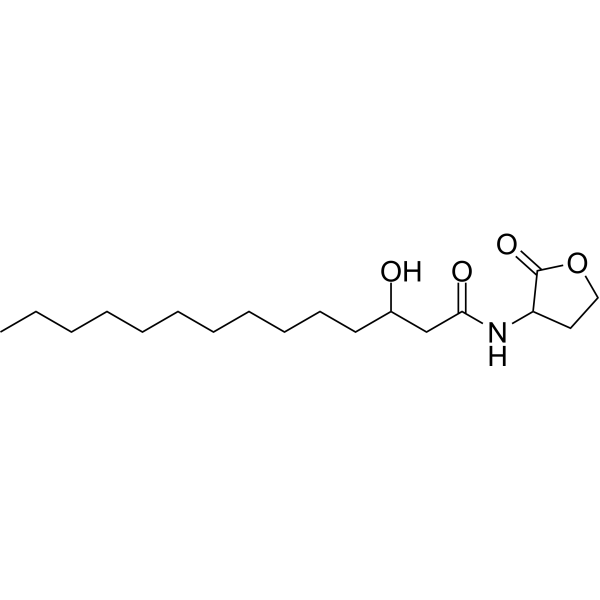
-
- HY-W036160
-
|
|
Amino Acid Derivatives
|
Others
|
|
N-Fmoc-O-ethyl-L-homoserine is an homoserine derivative, can be used in cyclic peptide compounds synthesis, as a reducing reagent .
|
-
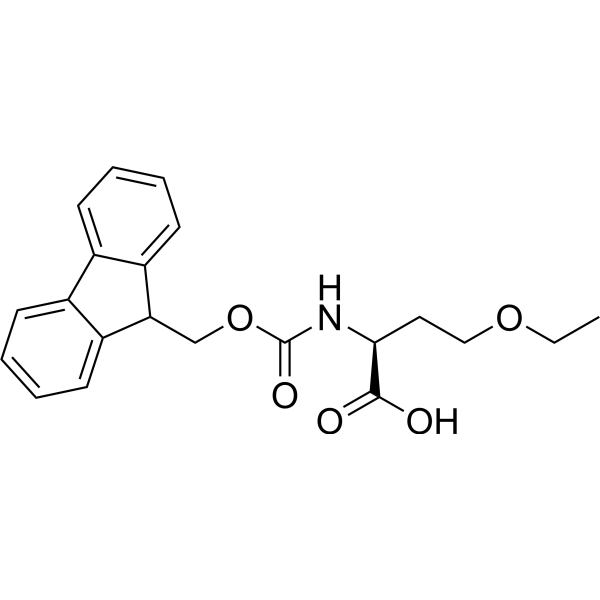
-
- HY-W025723A
-
|
N-(Benzyloxycarbonyl)-D-homoserine
|
Others
|
Cancer
|
|
N-Carbobenzoxy-D-homoserine (N-(Benzyloxycarbonyl)-D-homoserine) is D-homoserine with N-Carbobenzoxy protecting group, which can be used to synthesize Antibody-Drug Conjugates (ADCs).
|
-
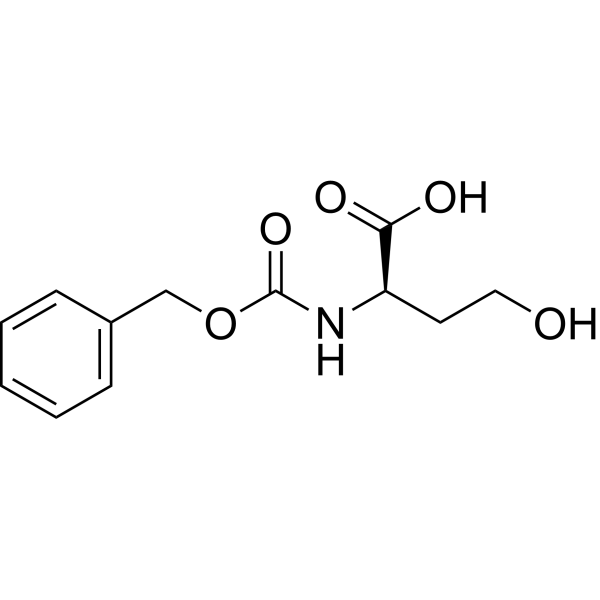
-
- HY-W025723
-
|
N-(Benzyloxycarbonyl)-L-homoserine
|
Others
|
Cancer
|
|
N-Carbobenzoxy-L-homoserine (N-(Benzyloxycarbonyl)-L-homoserine) is L-homoserine with N-Carbobenzoxy protecting group, which can be used as a linker (ADC Linker) for the synthesis of Antibody-Drug Conjugates (ADCs).
|
-
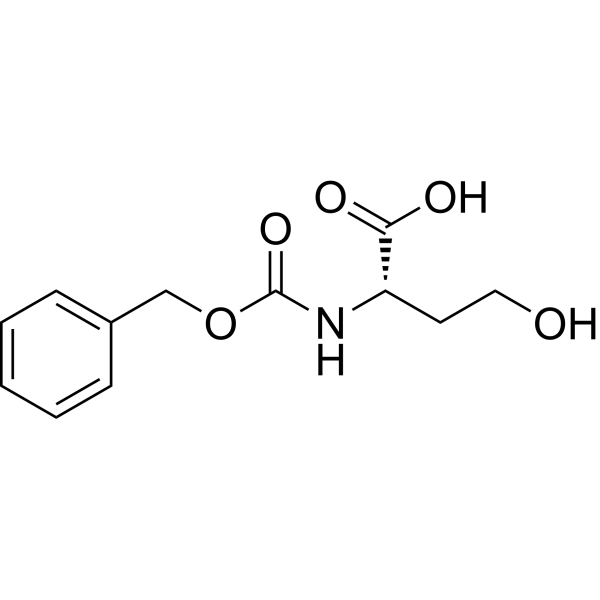
-
- HY-W008113
-
-
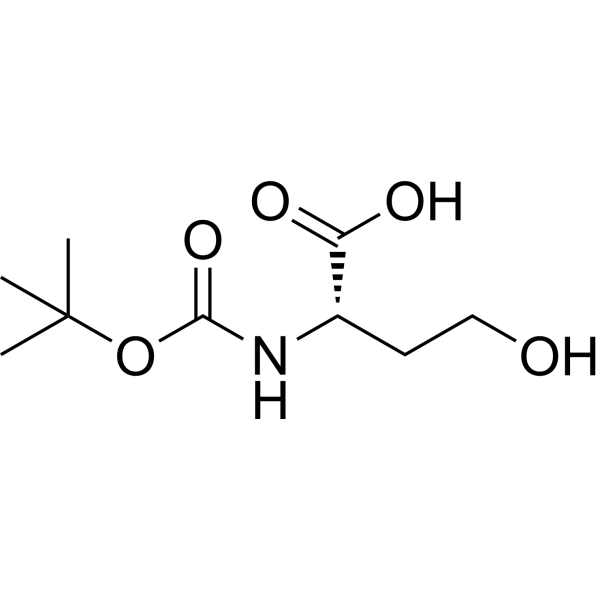
-
- HY-W017788
-
-
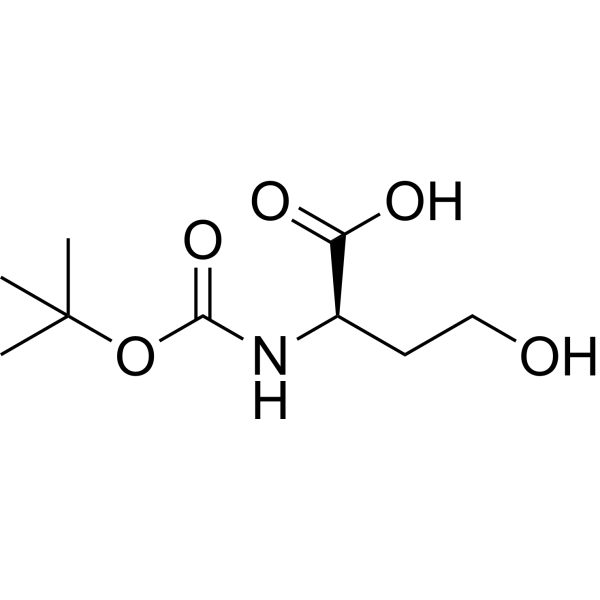
-
- HY-115393A
-
|
|
Bacterial
|
Infection
|
|
N-Heptanoyl-L-homoserine lactone is a member of N-acyl-homoserine lactone family. N-acyl-homoserine lactones (AHL) can regulate gene expression in gram-negative bacteria, such as Echerichia and Salmonella, and are involved in quorum sensing, cell to cell communication among bacteria.
|
-
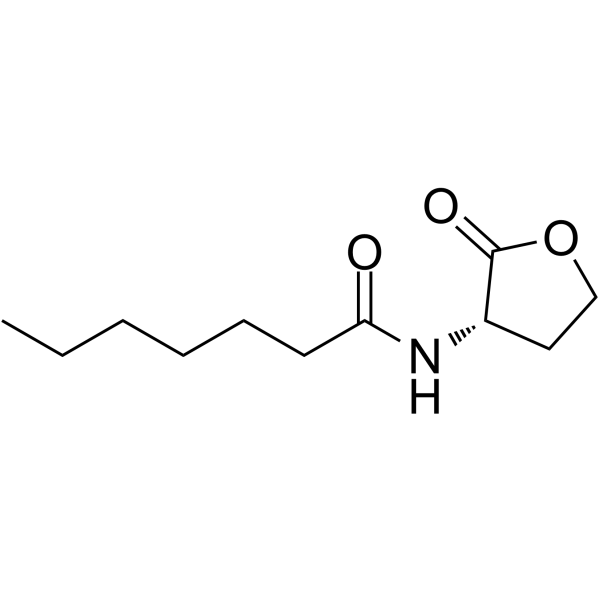
-
- HY-W002292
-
|
|
Endogenous Metabolite
|
Others
|
|
L-Homoserine is a non - protein amino acid, which is an important biosynthetic intermediate of threonine, methionine and lysine.
|
-

-
- HY-129405
-
|
|
Bacterial
|
Infection
|
|
N-(Ketocaproyl)-DL-homoserine lactone is a natural, very active ligand of LuxR. N-(Ketocaproyl)-DL-homoserine lactone is a quorum sensing (QS) autoinducer .
|
-
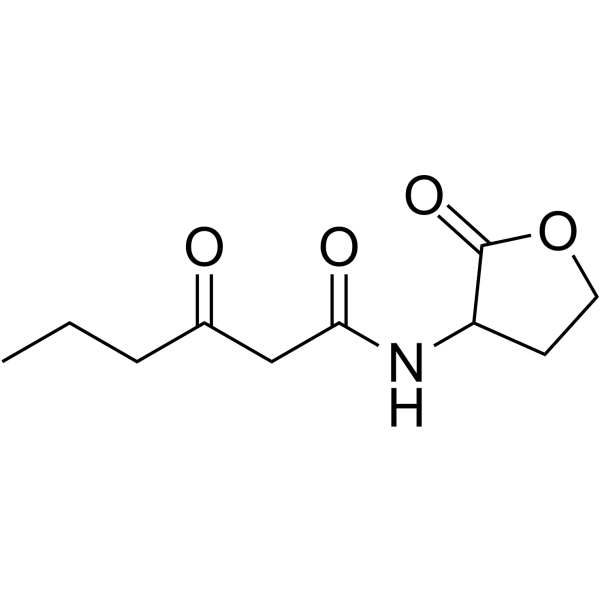
-
- HY-114816
-
|
C4-HSL; N-Butyryl-L-homoserine lactone
|
ADC Linker
Bacterial
|
Infection
Inflammation/Immunology
|
|
N-Butanoyl-L-homoserine lactone (C4-HSL) is a cleavable ADC linker used in the synthesis of antibody-drug conjugates (ADCs). N-Butanoyl-L-homoserine lactone has antibacterial activity and is used in antibacterial biofilm . N-Butanoyl-L-homoserine lactone aptamers blocks qurom sensing and inhibits biofilm formation in Pseudomonas aeruginosa .
|
-
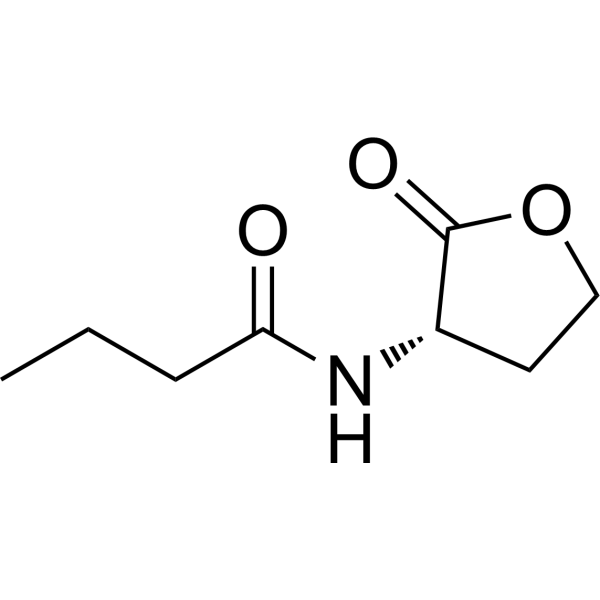
-
- HY-114816S
-
|
|
Isotope-Labeled Compounds
ADC Linker
Bacterial
|
Infection
Inflammation/Immunology
|
|
N-butyryl-L-Homoserine lactone-d5 is the deuterium labeled N-Butanoyl-L-homoserine lactone. N-Butanoyl-L-homoserine lactone (C4-HSL) is a cleavable ADC linker used in the synthesis of antibody-drug conjugates (ADCs). N-Butanoyl-L-homoserine lactone has antibacterial activity and is used in antibacterial biofilm[1]. N-Butanoyl-L-homoserine lactone aptamers blocks qurom sensing and inhibits biofilm formation in Pseudomonas aeruginosa[2][3].
|
-
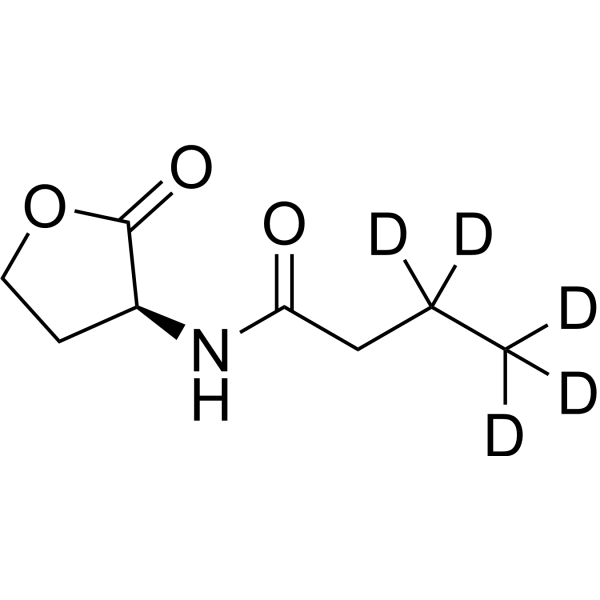
-
- HY-113764
-
|
(Rac)-C4-HSL
|
Bacterial
|
Infection
Inflammation/Immunology
|
|
N-Butanoyl-DL-homoserine lactone ((Rac)-C4-HSL) is a racemic mixture of N-Butanoyl-D-homoserine lactone and N-Butanoyl-L-homoserine lactone. N-Butanoyl-L-homoserine lactone is a cleavable ADC linker used in the synthesis of antibody-drug conjugates (ADCs). N-Butanoyl-L-homoserine lactone has antibacterial activity and is used in antibacterial biofilm. N-Butanoyl-L-homoserine lactone aptamers blocks qurom sensing and inhibits biofilm formation in Pseudomonas aeruginosa .
|
-
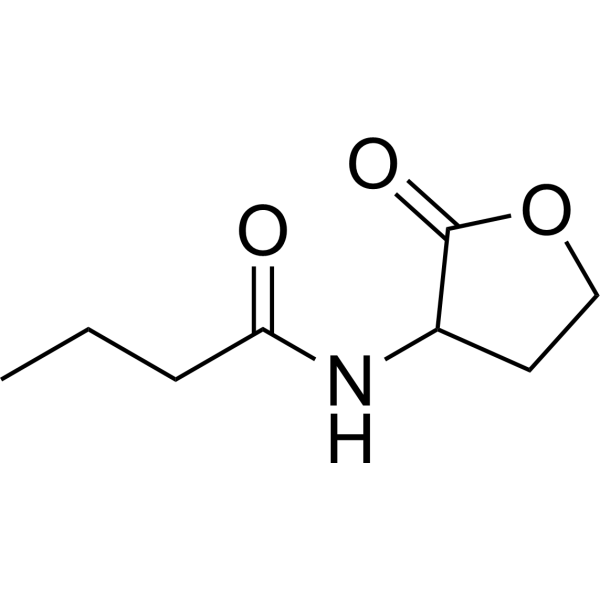
-
- HY-W008806
-
-
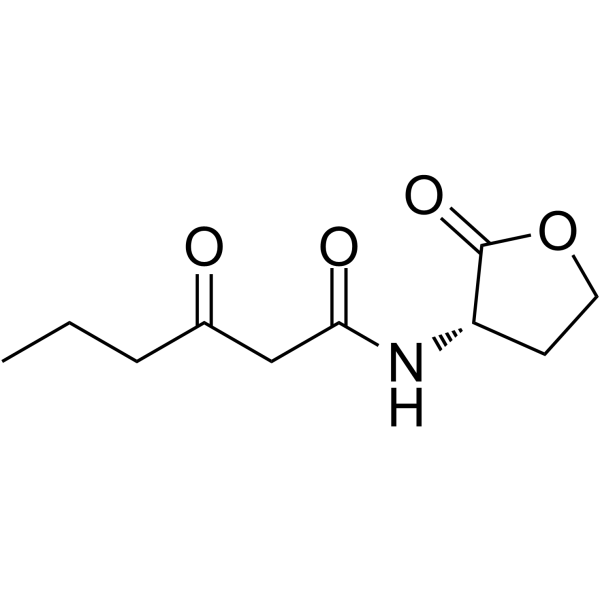
-
- HY-133684
-
|
|
Bacterial
|
Infection
|
|
N-Tetradecanoyl-L-homoserine lactone is a short-chained N-acyl homoserine lactone (AHL). Diatoms are frequently found in association with Proteobacteria, many members of which employ cell-to-cell communication via AHLs in aquatic habitats .
|
-
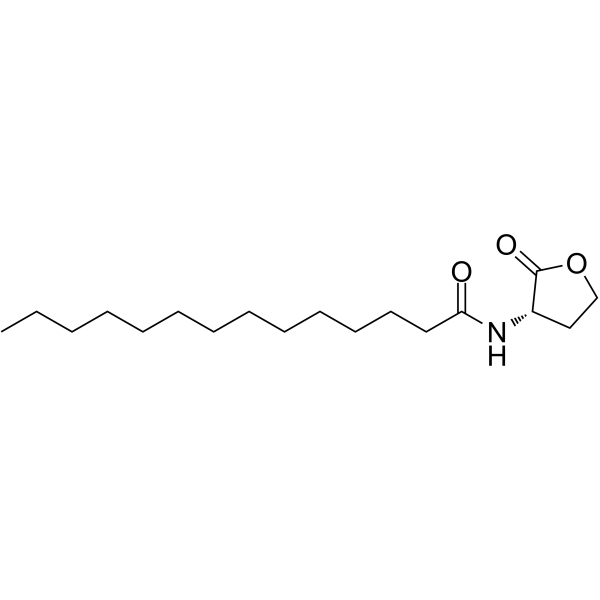
-
- HY-133685
-
|
|
Bacterial
|
Infection
|
|
N-Hexanoyl-L-homoserine lactone is a short-chained N-acyl homoserine lactone (AHL). Diatoms are frequently found in association with Proteobacteria, many members of which employ cell-to-cell communication via AHLs in aquatic habitats .
|
-

-
- HY-W044573
-
-
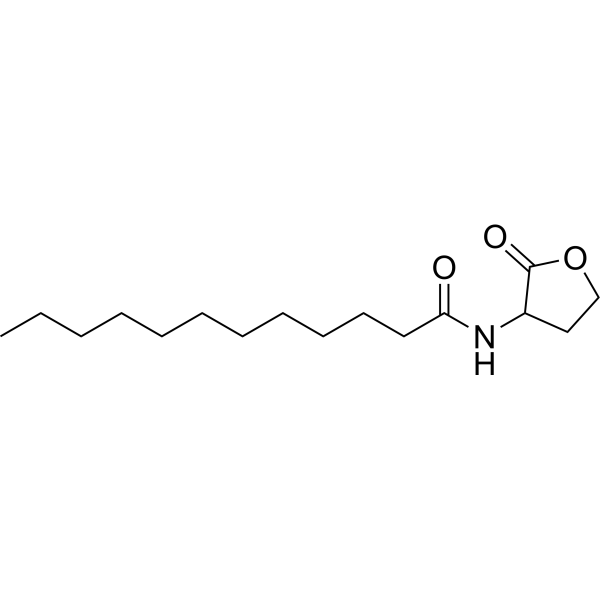
-
- HY-W045072
-
-
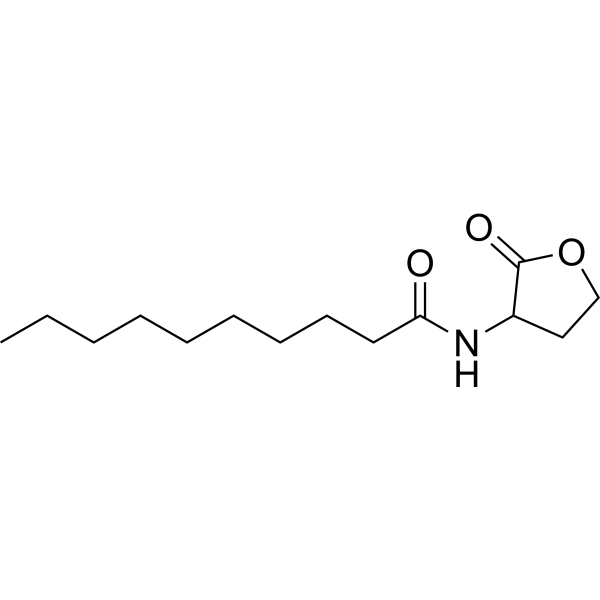
-
- HY-W142093
-
-
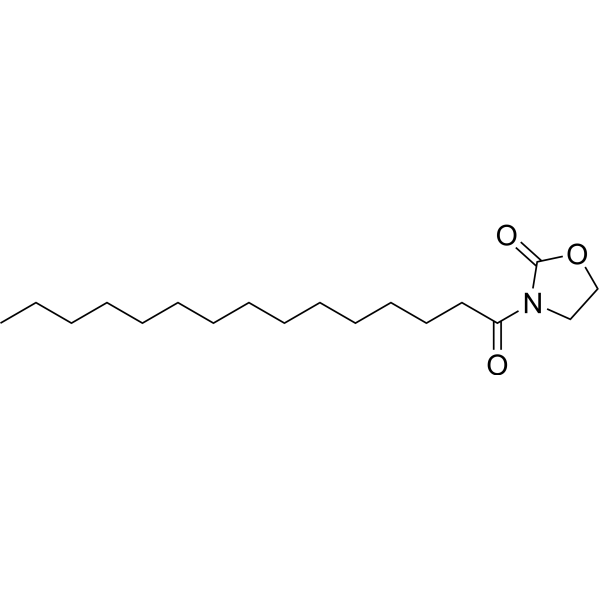
-
- HY-115393
-
-
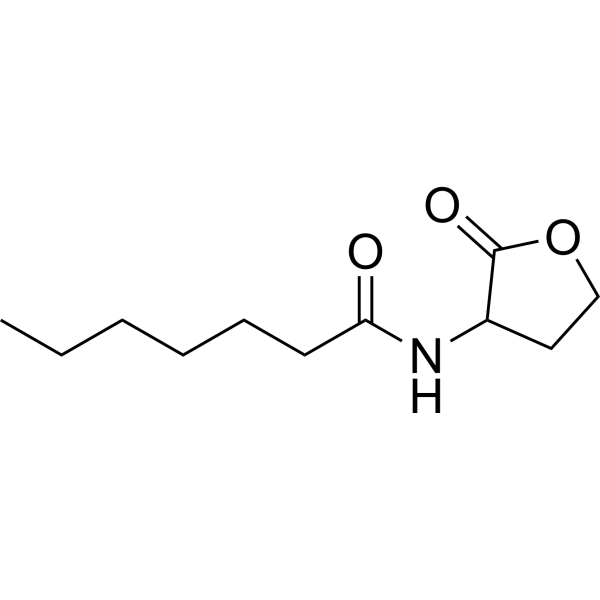
-
- HY-124237A
-
|
|
Bacterial
|
Infection
|
|
N-octanoyl-L-Homoserine lactone is a small diffusible signaling molecule involved in quorum sensing, thereby controlling gene expression and affecting cellular metabolism. N-octanoyl-L-Homoserine lactone can be used for the infection prevention and regulation of virulence in cystic fibro.
|
-
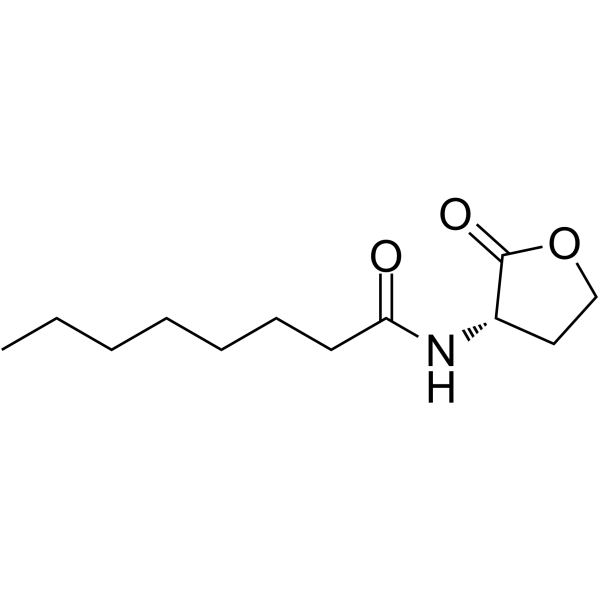
-
- HY-W015800
-
|
|
Biochemical Assay Reagents
|
Others
|
|
L-Homoserine lactone hydrochloride is a biochemical reagent that can be used as a biological material or organic compound for life science related research.
|
-
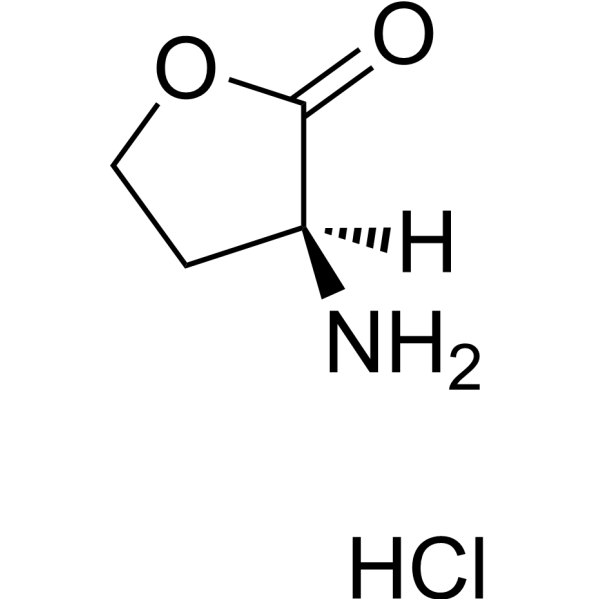
-
- HY-W045071
-
|
|
Bacterial
|
Infection
|
|
N-Hexanoyl-DL-homoserine lactone is a bacterial quorum sensing molecule produced in the rhizosphere. N-Hexanoyl-DL-homoserine lactone, a bacterial quorum sensing signal, induces transcriptional changes in Arabidopsis and may contribute to tuning plant growth to the microbial composition of the rhizosphere .
|
-
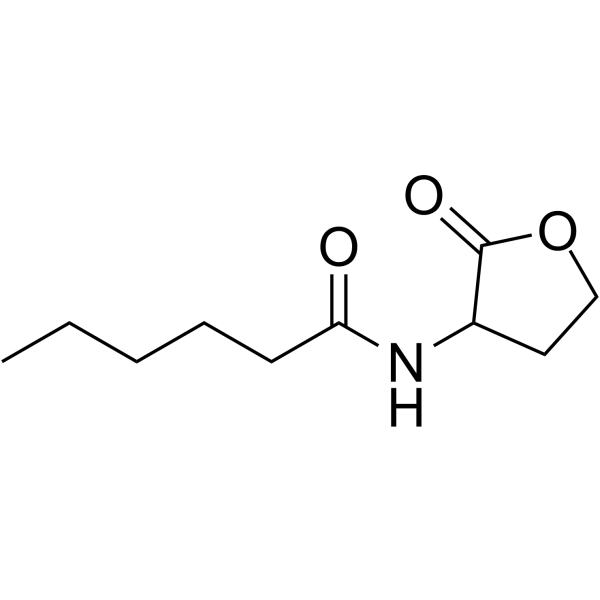
-
- HY-136409
-
|
C10-HSL
|
Bacterial
Reactive Oxygen Species
|
Infection
|
|
N-decanoyl-L-homoserine lactone (C10-HSL) is a N-acyl-homoserine lactone (AHL) N-decanoyl-L-homoserine lactone can inhibit primary root growth in Arabidopsis. N-decanoyl-L-homoserine lactone triggers a transient and immediate increase in the concentrations of cytosolic free Ca 2+ and reactive oxygen species (ROS), increases the activity of mitogen-activated protein kinase 6 (MPK6), and induces nitric oxide (NO) production in Arabidopsis roots .
|
-
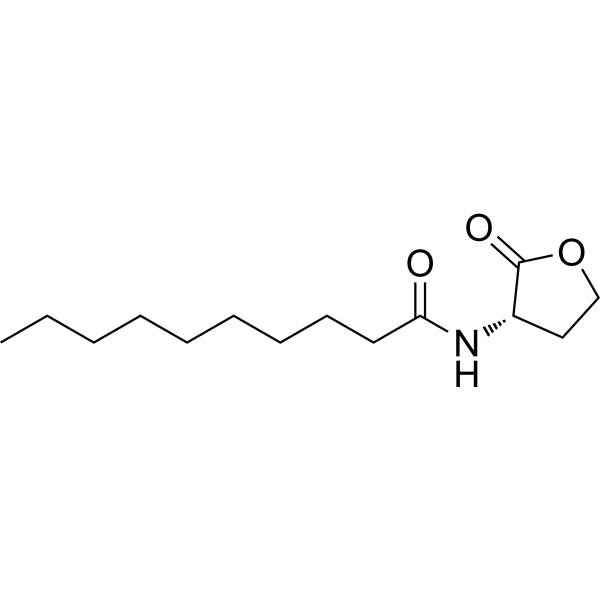
-
- HY-120242
-
|
|
Antibiotic
|
Infection
|
|
N-(3-Oxobutanoyl)-L-homoserine lactone (3-oxo-C4-HSL) is a carbapenem antibiotic biosynthesis autoregulator in Erwinia carotovora ATCC 39048. N-(3-Oxobutanoyl)-L-homoserine lactone induces expression of rhiI in R. leguminosarum .
|
-
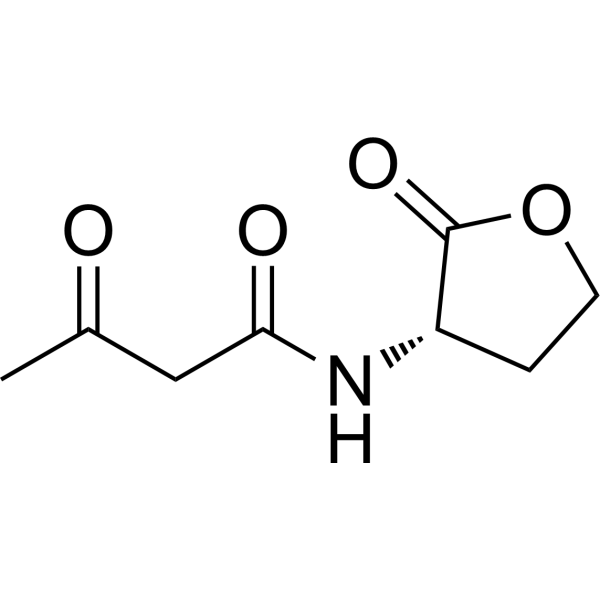
-
- HY-W127610
-
|
|
Biochemical Assay Reagents
|
Others
|
|
N-hexadecanoyl-L-Homoserine lactone is a biochemical reagent that can be used as a biological material or organic compound for life science related research.
|
-

-
- HY-137407
-
|
|
Bacterial
|
Infection
|
|
N-Phenylacetyl-L-homoserine lactone is a small diffusible signaling molecule that strongly antagonizes or super-activates the quorum sensing of Vibrio fischeri .
|
-
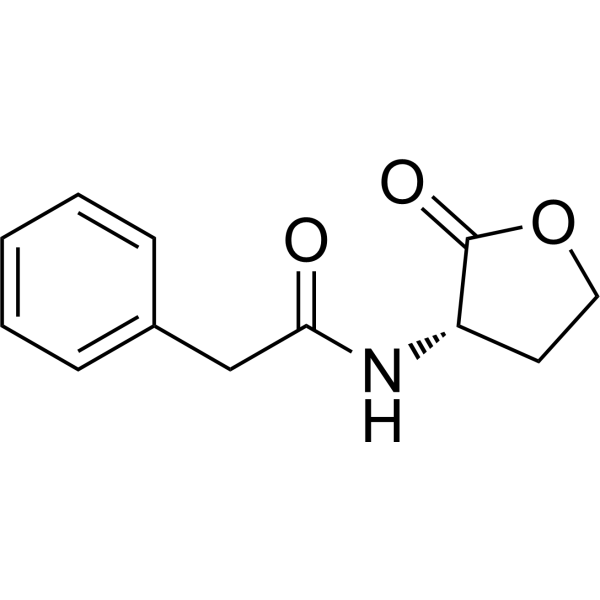
-
- HY-118697
-
|
C12-HSL
|
Others
|
Infection
|
|
N-dodecanoyl-L-Homoserine lactone (C12-HSL) is a quorum sensing (QS) signaling molecule. N-dodecanoyl-L-Homoserine lactone (C12-HSL) aptamers blocks qurom sensing and inhibits biofilm formation in Pseudomonas aeruginosa .
|
-
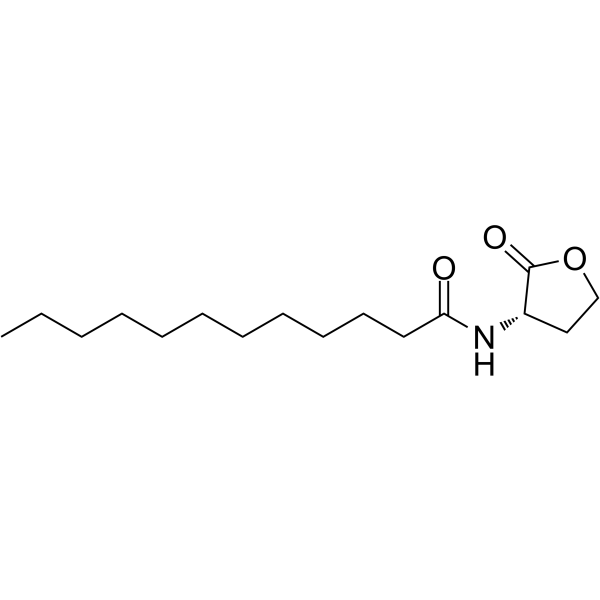
-
- HY-108700
-
|
|
SOD
|
Infection
|
|
N-3-Oxo-octanoyl-L-homoserine lactone, a quorum-sensing signal, is an Agrobacterium autoinducer .
|
-
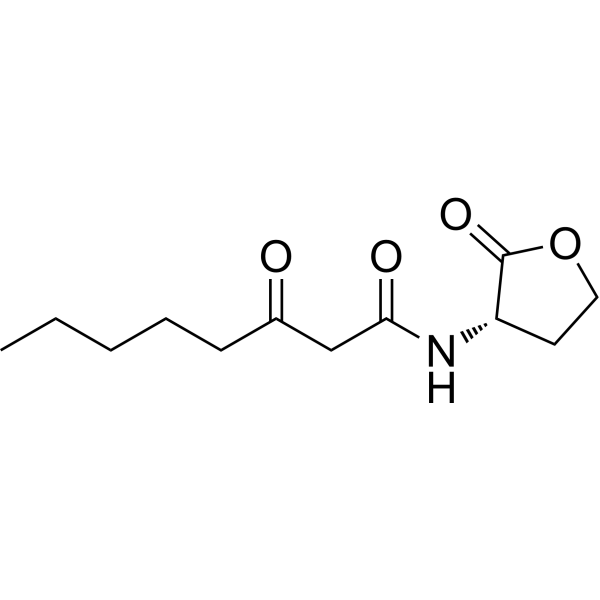
-
- HY-141641
-
|
HSL
|
Bacterial
|
|
|
N-(3-Oxopentanoyl)-L-homoserine lactone is an autoinducer, a kind of chemical signal molecule which passively diffuses across the bacterial envelope and accumulates intracellularly at high bacterial densities. It may bind to a protein related to the LuxR protein of V. fischeri and causes cell density-dependent gene expression. N-(3-Oxopentanoyl)-L-homoserine can be used for research of quorum sensing .
|
-
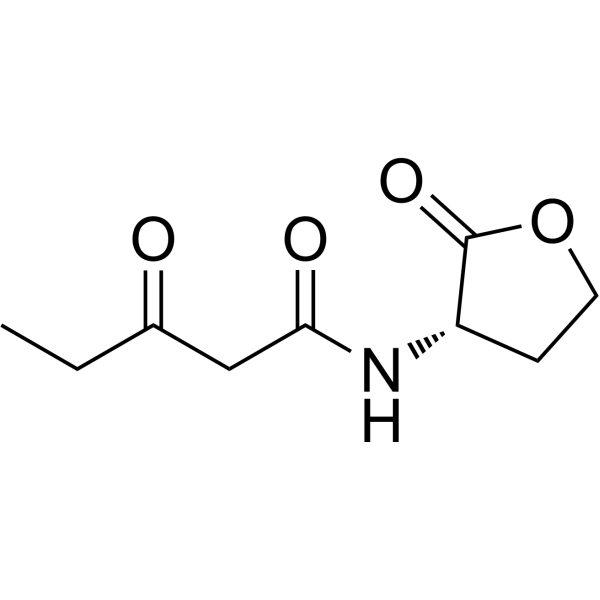
-
- HY-N12107
-
|
|
Others
|
Others
|
|
N-[(Z)-Hexadec-9-enoyl]homoserine lactone (Compound 2) is a compound that can be isolated from Roseovarius tolerans .
|
-
![N-[(Z)-Hexadec-9-enoyl]<em>homoserine</em> lactone](//file.medchemexpress.com/product_pic/hy-n12107.gif)
-
- HY-115399A
-
|
3-Oxo-C16-AHL
|
Bacterial
|
Metabolic Disease
|
|
N-3-Oxo-hexadecanoyl-L-Homoserine lactone is a signaling molecule to coordinate group behaviors at high densities in many bacteria. N-3-Oxo-hexadecanoyl-L-Homoserine lactone adsorbs to and promotes the remodeling of lipid membranes in ways that could underpin cell-cell or host-cell interactions .
|
-

-
- HY-145462
-
|
|
Bacterial
|
Infection
|
|
N-cis-octadec-9Z-enoyl-L-Homoserine lactone is a potent inhibitor of AhyI. AhyI (expressing acylhomoserine lactone) is responsible for the biosynthesis of autoinducer-1 (AI-1), commonly referred to as a quorum sensing (QS) signaling molecule, which plays an essential role in bacterial communication. N-cis-octadec-9Z-enoyl-L-Homoserine lactone is a competitive inhibitor of AI-1 biosynthesis .
|
-

-
- HY-114544A
-
|
OdDHL
|
Bacterial
|
Others
|
|
N-3-oxo-dodecanoyl-L-Homoserine lactone (3-oxo-C12-HSL) is a bacterial quorum-sensing signaling molecule produced by P. aeruginosa and strains of the B. cepacia complex .Quorum sensing is a regulatory system used by bacteria for controlling gene expression in response to increasing cell density.N-3-oxo-dodecanoyl-L-Homoserine lactone induces the production of IL-8 in 16HBE human bronchial epithelial cells .
|
-

-
- HY-W048668
-
-
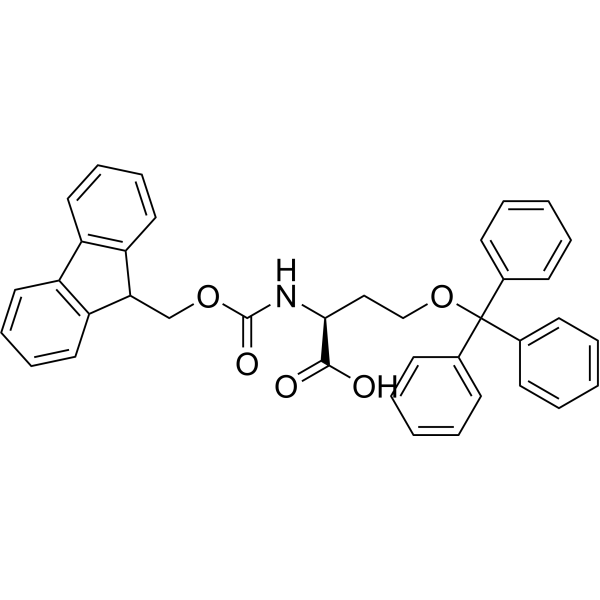
-
- HY-134560
-
|
3-Oxo-C10-HSL
|
Others
|
Inflammation/Immunology
|
|
N-(3-Oxodecanoyl)-L-homoserine lactone (3-Oxo-C10-HSL) is a bacterial quorum sensing signal autoinducer molecule .
|
-
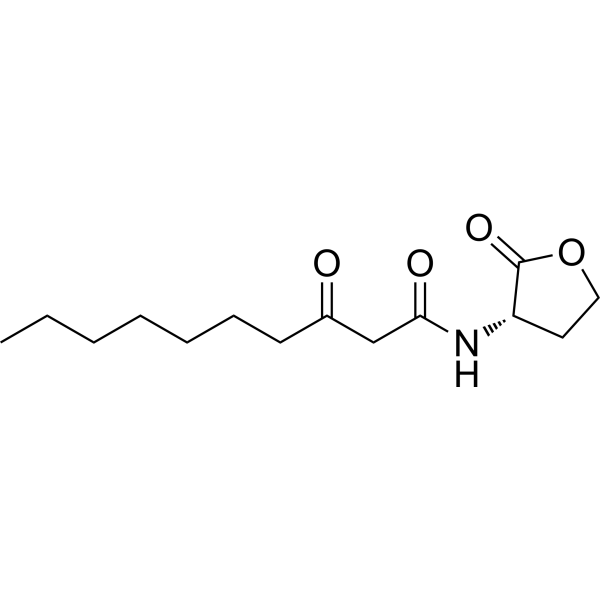
-
- HY-W127486
-
|
|
Biochemical Assay Reagents
|
Others
|
|
N-3-oxo-hexadec-11Z-enoyl-L-Homoserine lactone is a biochemical reagent that can be used as a biological material or organic compound for life science related research.
|
-

-
- HY-116536
-
|
oxo-C14-HSL
|
Bacterial
|
Infection
|
|
N-3-Oxo-tetradecanoyl-L-homoserine lactone (oxo-C14-HSL) is a rhizobacterial inducer and can improve basic defense against nematodes .
|
-
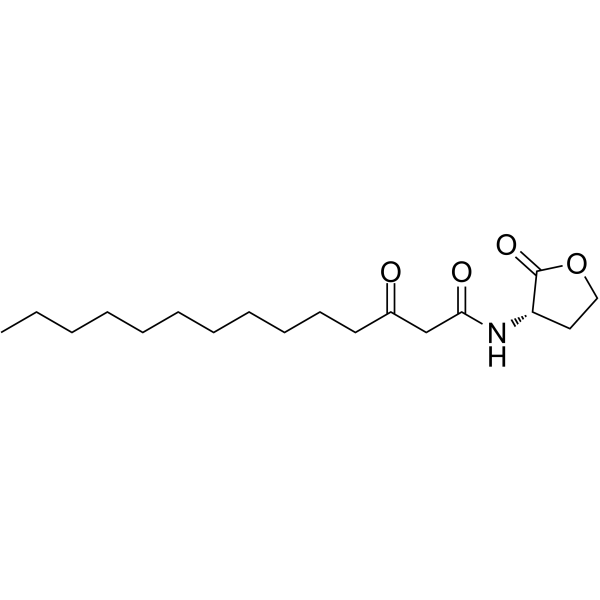
-
- HY-W127487
-
|
|
Biochemical Assay Reagents
|
Others
|
|
Quorum sensing is a regulatory system used by bacteria to control gene expression in response to increased cell density. This regulatory process manifests itself in a variety of phenotypes, including biofilm formation and virulence factor production. Coordinated gene expression is achieved through the production, release and detection of small diffusible signaling molecules called autoinducers. N-acylated homoserine lactones (AHLs) comprise a class of such autoinducers, each of which generally consists of a fatty acid coupled to a homoserine lactone (HSL). Modulation of bacterial quorum-sensing signaling systems to suppress pathogenesis represents a new approach to antimicrobial research for infectious diseases. AHLs differ in acyl length (C4-C18), C3 substitution (hydrogen, hydroxyl, or oxo group), and the presence or absence of one or more carbon-carbon double bonds in the fatty acid chain. These differences confer signaling specificity through the affinity of the LuxR family of transcriptional regulators. C18-HSL, one of four lipophilic long acyl side chain AHLs produced by the LuxI AHL synthase homolog SinI, is involved in quorum-sensing signaling in strains of Rhizobium meliloti (a nitrogen-fixing bacterial symbiont of the legume M. sativa) . C18-HSL and other hydrophobic AHLs tend to localize in the relatively lipophilic environment of bacterial cells and cannot diffuse freely across the cell membrane. Long-chain N-acyl homoserine lactones can be exported from cells by efflux pumps, or can be transported between communicating cells by extracellular outer membrane vesicles.
|
-

-
- HY-114773
-
|
|
Biochemical Assay Reagents
|
Others
|
|
Quorum sensing is a regulatory system used by bacteria to control gene expression in response to increased cell density. This regulatory process manifests itself in a variety of phenotypes, including biofilm formation and virulence factor production. Coordinated gene expression is achieved through the production, release and detection of small diffusible signaling molecules called autoinducers. N-acylated homoserine lactones (AHLs) comprise a class of such autoinducers, each of which generally consists of a fatty acid coupled to a homoserine lactone (HSL). Modulation of bacterial quorum-sensing signaling systems to suppress pathogenesis represents a new approach to antimicrobial research for infectious diseases. AHLs differ in acyl length (C4-C18), C3 substitution (hydrogen, hydroxyl, or oxo group), and the presence or absence of one or more carbon-carbon double bonds in the fatty acid chain. These differences confer signaling specificity through the affinity of the LuxR family of transcriptional regulators. C11-HSL has a rare odd-numbered acyl carbon chain and may be a minor quorum-sensing signaling molecule in Pseudomonas aeruginosa strains.
|
-

-
- HY-W127393
-
|
|
Biochemical Assay Reagents
|
Others
|
|
Quorum sensing is a regulatory system used by bacteria to control gene expression in response to increased cell density. This regulatory process manifests itself in a variety of phenotypes, including biofilm formation and virulence factor production. Coordinated gene expression is achieved through the production, release and detection of small diffusible signaling molecules called autoinducers. N-acylated homoserine lactones (AHLs) comprise a class of such autoinducers, each of which generally consists of a fatty acid coupled to a homoserine lactone (HSL). Modulation of bacterial quorum-sensing signaling systems to suppress pathogenesis represents a new approach to antimicrobial research for infectious diseases. AHLs differ in acyl length (C4-C18), C3 substitution (hydrogen, hydroxyl, or oxo group), and the presence or absence of one or more carbon-carbon double bonds in the fatty acid chain. These differences confer signaling specificity through the affinity of the LuxR family of transcriptional regulators. C9-HSL is a rare odd-numbered acyl carbon chain produced by wild-type Erwinia carotovora strain SCC 3193 grown in nutrient-rich Luria-Bertani broth (LB) medium.
|
-

-
- HY-124286
-
|
C14-9Z-HSL
|
Bacterial
|
Inflammation/Immunology
|
|
N-cis-Tetradec-9Z-enoyl-L-homoserine lactone (C14-9Z-HSL) is an autoinducer in C. rodentium, that serves as signal molecule, coordinates the gene expression and behaviors through diffusion into cells of different bacterial species .
|
-
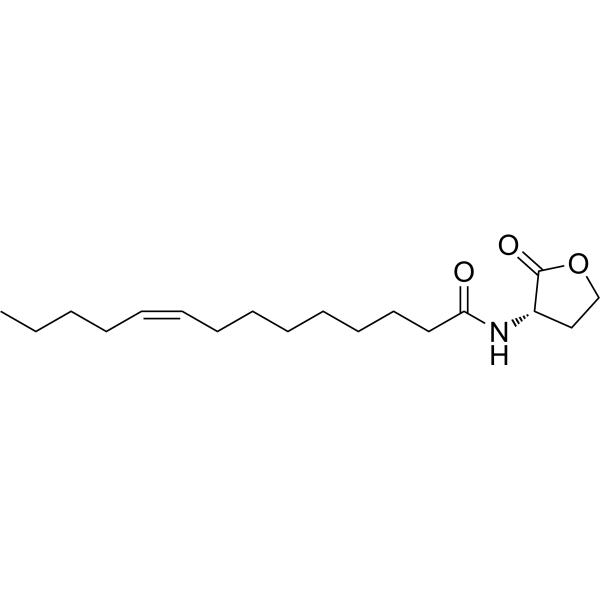
-
- HY-W012870
-
|
|
Biochemical Assay Reagents
|
Others
|
|
H-DL-HoSer-OH is a biochemical reagent that can be used as a biological material or organic compound for life science related research.
|
-

-
- HY-116762
-
|
|
Biochemical Assay Reagents
|
Others
|
|
Quorum sensing is a regulatory system used by bacteria to control gene expression in response to increased cell density. The control of bacterial infection by quenching the quorum sensing system of bacteria is a promising research area. The expression of specific target genes, such as transcriptional regulators belonging to the LuxIR protein family, is coordinated by the synthesis of diffusible acyl homoserine lactone (AHL) molecules. N-butyryl-L-Homocysteine thio-lactone is an analog of N-butyryl-L-homoserine lactone, a small, diffusible signaling molecule involved in quorum sensing, thereby controlling gene expression and cellular metabolism . N-butyryl-L-homocysteine thiolactone induces violacein expression in Viola viola mutants that normally fail to produce AHL.
|
-

-
- HY-N10192
-
|
|
Endogenous Metabolite
Bacterial
|
Infection
|
|
Aculene D, a fungal metabolite, shows quorum sensing (QS) inhibitory activity against Chromobacterium violaceum CV026, and could significantly reduce violacein production in N-hexanoyl-l-homoserine lactone (C6-HSL) induced C. violaceum CV026 cultures at sub-inhibitory concentrations .
|
-
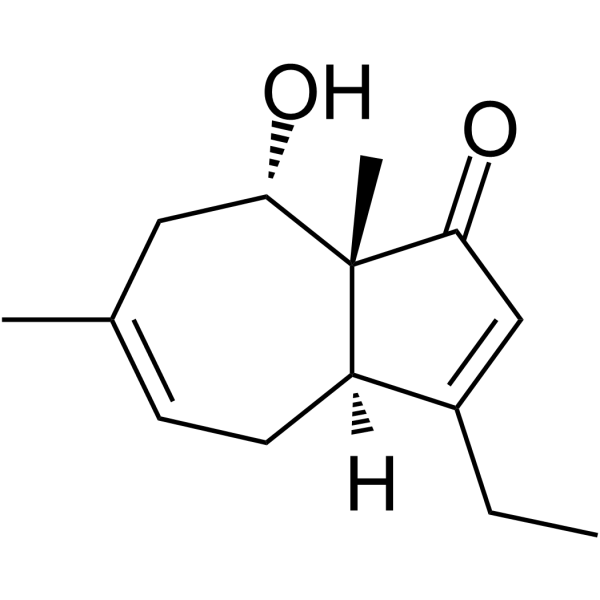
-
- HY-145492
-
|
N-(3-Oxo-7Z-tetradecenoyl)-L-homoserine lactone
|
Others
|
Inflammation/Immunology
|
|
Δ7(Z)-C14-HSL (Compound 12) is an immunosuppressive agent that can inhibit the proliferation of mouse splenic cells with an IC50 of 17 μM. Δ7(Z)-C14-HSL can be used for further studying its potential as a molecular mechanism in TNF-R-driven immune diseases, especially autoimmune diseases such as psoriasis, rheumatoid arthritis, and type 1 diabetes .
|
-

| Cat. No. |
Product Name |
Type |
-
- HY-W015800
-
|
|
Biochemical Assay Reagents
|
|
L-Homoserine lactone hydrochloride is a biochemical reagent that can be used as a biological material or organic compound for life science related research.
|
-
- HY-W127610
-
|
|
Biochemical Assay Reagents
|
|
N-hexadecanoyl-L-Homoserine lactone is a biochemical reagent that can be used as a biological material or organic compound for life science related research.
|
-
- HY-W127486
-
|
|
Biochemical Assay Reagents
|
|
N-3-oxo-hexadec-11Z-enoyl-L-Homoserine lactone is a biochemical reagent that can be used as a biological material or organic compound for life science related research.
|
-
- HY-W127487
-
|
|
Biochemical Assay Reagents
|
|
Quorum sensing is a regulatory system used by bacteria to control gene expression in response to increased cell density. This regulatory process manifests itself in a variety of phenotypes, including biofilm formation and virulence factor production. Coordinated gene expression is achieved through the production, release and detection of small diffusible signaling molecules called autoinducers. N-acylated homoserine lactones (AHLs) comprise a class of such autoinducers, each of which generally consists of a fatty acid coupled to a homoserine lactone (HSL). Modulation of bacterial quorum-sensing signaling systems to suppress pathogenesis represents a new approach to antimicrobial research for infectious diseases. AHLs differ in acyl length (C4-C18), C3 substitution (hydrogen, hydroxyl, or oxo group), and the presence or absence of one or more carbon-carbon double bonds in the fatty acid chain. These differences confer signaling specificity through the affinity of the LuxR family of transcriptional regulators. C18-HSL, one of four lipophilic long acyl side chain AHLs produced by the LuxI AHL synthase homolog SinI, is involved in quorum-sensing signaling in strains of Rhizobium meliloti (a nitrogen-fixing bacterial symbiont of the legume M. sativa) . C18-HSL and other hydrophobic AHLs tend to localize in the relatively lipophilic environment of bacterial cells and cannot diffuse freely across the cell membrane. Long-chain N-acyl homoserine lactones can be exported from cells by efflux pumps, or can be transported between communicating cells by extracellular outer membrane vesicles.
|
-
- HY-114773
-
|
|
Biochemical Assay Reagents
|
|
Quorum sensing is a regulatory system used by bacteria to control gene expression in response to increased cell density. This regulatory process manifests itself in a variety of phenotypes, including biofilm formation and virulence factor production. Coordinated gene expression is achieved through the production, release and detection of small diffusible signaling molecules called autoinducers. N-acylated homoserine lactones (AHLs) comprise a class of such autoinducers, each of which generally consists of a fatty acid coupled to a homoserine lactone (HSL). Modulation of bacterial quorum-sensing signaling systems to suppress pathogenesis represents a new approach to antimicrobial research for infectious diseases. AHLs differ in acyl length (C4-C18), C3 substitution (hydrogen, hydroxyl, or oxo group), and the presence or absence of one or more carbon-carbon double bonds in the fatty acid chain. These differences confer signaling specificity through the affinity of the LuxR family of transcriptional regulators. C11-HSL has a rare odd-numbered acyl carbon chain and may be a minor quorum-sensing signaling molecule in Pseudomonas aeruginosa strains.
|
-
- HY-W127393
-
|
|
Biochemical Assay Reagents
|
|
Quorum sensing is a regulatory system used by bacteria to control gene expression in response to increased cell density. This regulatory process manifests itself in a variety of phenotypes, including biofilm formation and virulence factor production. Coordinated gene expression is achieved through the production, release and detection of small diffusible signaling molecules called autoinducers. N-acylated homoserine lactones (AHLs) comprise a class of such autoinducers, each of which generally consists of a fatty acid coupled to a homoserine lactone (HSL). Modulation of bacterial quorum-sensing signaling systems to suppress pathogenesis represents a new approach to antimicrobial research for infectious diseases. AHLs differ in acyl length (C4-C18), C3 substitution (hydrogen, hydroxyl, or oxo group), and the presence or absence of one or more carbon-carbon double bonds in the fatty acid chain. These differences confer signaling specificity through the affinity of the LuxR family of transcriptional regulators. C9-HSL is a rare odd-numbered acyl carbon chain produced by wild-type Erwinia carotovora strain SCC 3193 grown in nutrient-rich Luria-Bertani broth (LB) medium.
|
-
- HY-W012870
-
|
|
Biochemical Assay Reagents
|
|
H-DL-HoSer-OH is a biochemical reagent that can be used as a biological material or organic compound for life science related research.
|
-
- HY-116762
-
|
|
Biochemical Assay Reagents
|
|
Quorum sensing is a regulatory system used by bacteria to control gene expression in response to increased cell density. The control of bacterial infection by quenching the quorum sensing system of bacteria is a promising research area. The expression of specific target genes, such as transcriptional regulators belonging to the LuxIR protein family, is coordinated by the synthesis of diffusible acyl homoserine lactone (AHL) molecules. N-butyryl-L-Homocysteine thio-lactone is an analog of N-butyryl-L-homoserine lactone, a small, diffusible signaling molecule involved in quorum sensing, thereby controlling gene expression and cellular metabolism . N-butyryl-L-homocysteine thiolactone induces violacein expression in Viola viola mutants that normally fail to produce AHL.
|
| Cat. No. |
Product Name |
Target |
Research Area |
-
- HY-119543
-
|
|
Amino Acid Derivatives
|
Others
|
|
O-Succinyl-L-homoserine is a homoserine derivative. O-Succinyl-L-homoserine is an intermediate in the biosynthesis of methionine in Escherichia coli and Salmonella typhimurium .
|
-
- HY-W008113
-
-
- HY-W017788
-
-
- HY-W036160
-
|
|
Amino Acid Derivatives
|
Others
|
|
N-Fmoc-O-ethyl-L-homoserine is an homoserine derivative, can be used in cyclic peptide compounds synthesis, as a reducing reagent .
|
-
- HY-124237
-
|
|
Peptides
|
Others
|
|
N-Octanoyl-DL-homoserine lactone is a member of N-acyl homoserine lactones (AHLs) family, also one of the signal molecule of quorum-sensing (QS) signals. N-Octanoyl-DL-homoserine lactone can regulate the production of siderophores and present positive correlation in Aeromonas sobria strain AS7. N-Octanoyl-DL-homoserine lactone can also regulate the secretion of proteases and stimulate the production of total volatile basic nitrogen (TVB-N) .
|
-
- HY-W044573
-
-
- HY-W045072
-
-
- HY-W142093
-
-
- HY-115393
-
-
- HY-W048668
-
-
- HY-W141788
-
|
|
Peptides
|
Infection
|
|
N-Butyryl-DL-homocysteine thiolactone is an N-acyl homoserine lactone (AHL) analogue. AHLs are potent inhibitors of biofilm formation and virulence factors, and has been used for degrading microbial communities, reducing bacterial pathogenicity .
|
| Cat. No. |
Product Name |
Category |
Target |
Chemical Structure |
| Cat. No. |
Product Name |
Chemical Structure |
-
- HY-114816S
-
|
|
|
N-butyryl-L-Homoserine lactone-d5 is the deuterium labeled N-Butanoyl-L-homoserine lactone. N-Butanoyl-L-homoserine lactone (C4-HSL) is a cleavable ADC linker used in the synthesis of antibody-drug conjugates (ADCs). N-Butanoyl-L-homoserine lactone has antibacterial activity and is used in antibacterial biofilm[1]. N-Butanoyl-L-homoserine lactone aptamers blocks qurom sensing and inhibits biofilm formation in Pseudomonas aeruginosa[2][3].
|
-

| Cat. No. |
Product Name |
Application |
Reactivity |
-
- HY-P82707
-
|
CTH; Cystathionine gamma lyase; Cysteine desulfhydrase; Gamma cystathionase; homoserine deaminase
|
WB, IP
|
Human |
Your information is safe with us. * Required Fields.
Inquiry Information
- Product Name:
- Cat. No.:
- Quantity:
- MCE Japan Authorized Agent:






































![N-[(Z)-Hexadec-9-enoyl]<em>homoserine</em> lactone](http://file.medchemexpress.com/product_pic/hy-n12107.gif)

















